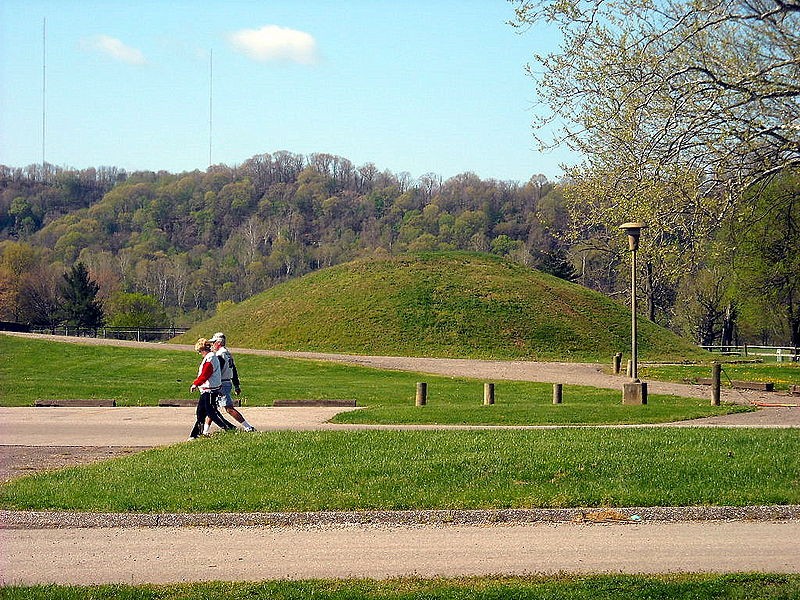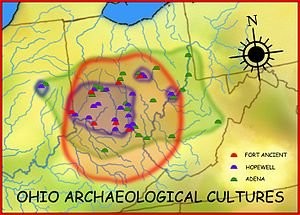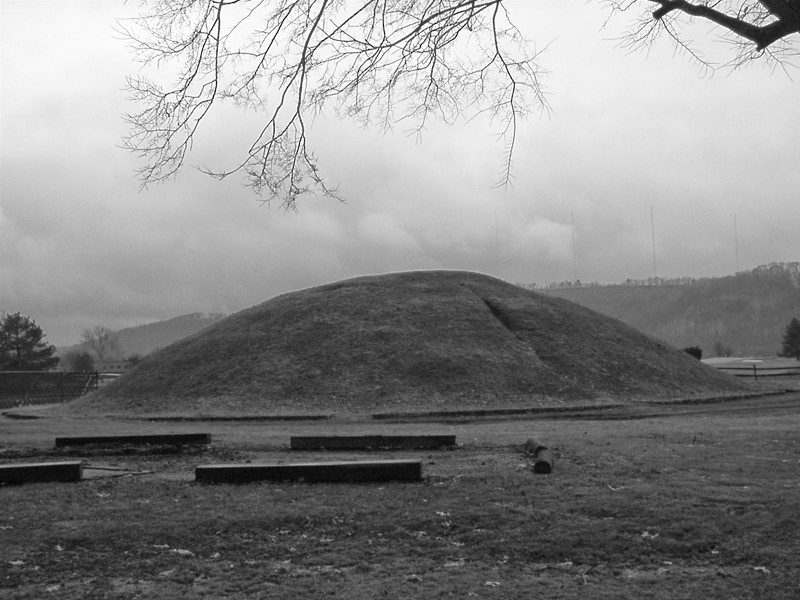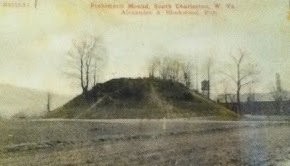Shawnee Reservation Mound
Introduction
Text-to-speech Audio
Images
Shawnee Reservation Mound. 2008

Geographic distribution of the Adena (800 BCE–100 AD), Hopewell (200 BCE–500 AD), and Fort Ancient (1000–1750 AD) cultures.

Adena burial mound located in Shawnee Park, in Dunbar, West Virginia. 1953

Photo from 1909 where the sacred via that led to the Kanawha River can still be seen.

Backstory and Context
Text-to-speech Audio
Shawnee Reservation Mound, also known as the Institute Fairgrounds Mound and the Poorhouse Mound, is located in Shawnee Regional Park in Dunbar, West Virginia. This mound today is about 20’ high and 80’ in basal diameter, but was originally 25’ high and greater than 80’ in diameter. The Smithsonian Institution's Bureau of Ethnology partially excavated the mound in the 1880s, at which time they uncovered three burials or cremations. The burial mound, one of the few that remain in the Kanawha Valley, dates back to the Adena period. It was built after 500 B.C.
About three feet from the top of the mound, known as the Poorhouse Mound or Shawnee Reservation Mound, were the remains of two people, one over the other and facing each another, according to the report. Ten feet down from the top of the mound were two large skeletons in a sitting position with their legs interlocked at the knees, according to Spencer’s report. Between the people was a hollowed-out sandstone slab filled with white ashes containing burned bone fragments. One of the skeletons wore copper bracelets.
Excavations made in the Dunbar mound revealed it to be a double storied structure. The exploration was made by first sinking a vertical shaft through the center of the mound, down to and slightly below the original surface of the ground. This mound was about as high as a modern three-story house. Within the mound were found successive layers of skeletons, some of them sepulcheredin a stone vault, and those nearer the bottom in a large wooden vault. Some of the beams of the latter were of walnut, and were 12 inches in diameter.
The mound has been mostly undisturbed since the partial excavation in the 1880s, and is located directly beside the Shawnee Park clubhouse. A short knee wall was erected around the base of the mound in the late 20th century. In 2018, a multi-sports complex is in very close proximity to the mound, which makes its future preservation of utmost importance. Shawnee Mound is an important cultural artifact and one of only a few burial mounds that survive in the area today.
Cite This Entry
WV State University et. al. "Shawnee Reservation Mound ." Clio: Your Guide to History. May 10, 2018. Accessed March 31, 2025. https://theclio.com/entry/19178
Sources
Fenton, James P. "Adena." e-WV: The West Virginia Encyclopedia. 15 November 2016. Web. 01 May 2018.
"Indian Mounds of the Middle Ohio Valley" by: Susan L. Woodward and Jerry N. McDonald http://www.wvexp.com/index.php/File:Dunbar_Park_Mound.JPG
Maslowski, Bob. "Kanawha Valley & Its Prehistoric People." https://cwva.org/area_prehistories/kvprehistory-maslowski.html
"Officials: Shawnee Park sports Complex wouldn't affect burial mound." Charleston Gazette-Mail, April 16, 2017.
Webb, William S. & Raymond S. Baby. The Adena People 2. Columbus: Ohio Historical Society, 1957.

